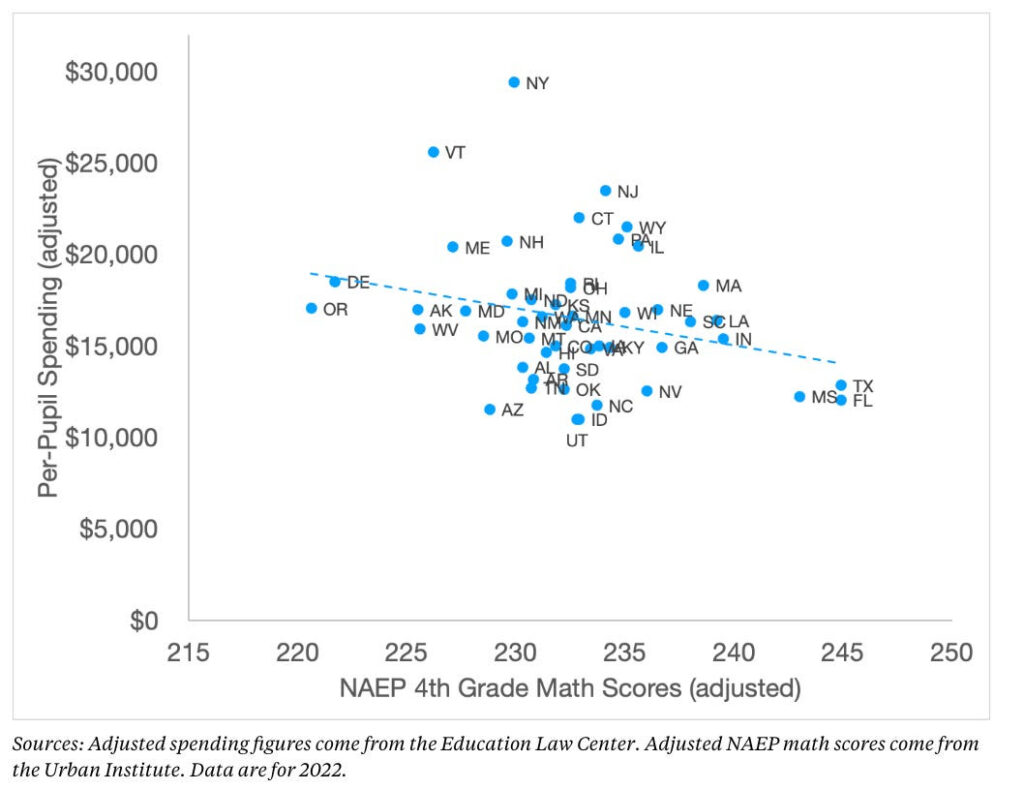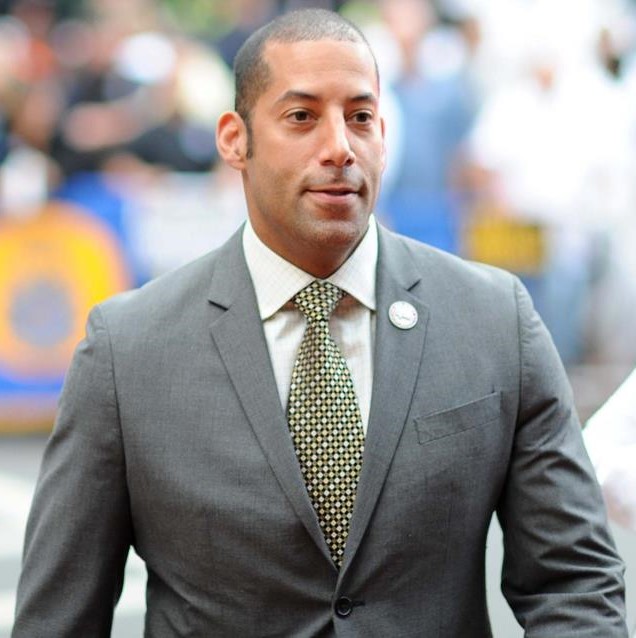
Freehold Teacher Wins Fulbright Award
September 2, 2025
Four Tips For Easing Back-to-School Transitions For Students With Autism
September 4, 2025Two Data Points Show We’re Not Getting Our Money’s Worth in Jersey Schools
One note on these two items: Both data points — ranking states on how much they spend on K-12 education and giving teachers salary boosts for earning graduate degrees — are based solely on inputs, the resources put into a system, as opposed to the outcomes of those resources, like how much learning students are gaining. Sometimes more isn’t more.
Data Point #1
A report from Education Law Center, Making the Grade,” shows that in 2022 New Jersey’s public school system spent $23,496 per pupil, the third highest in the nation and $6,851 more per year than the national average. But, points out Chad Aldeman, “the relationship between school spending and student outcomes is weaker than you might imagine.”
In order to make his point, Aldeman used the learning outcomes from that money (based on 4th grade NAEP scores) and plotted it with Education Law Center’s spending figures (adjusted for cost-of-living differences) and the demographically adjusted NAEP scores from the Urban Institute.
As you can see from the chart below, NJ’s cost per pupil is bested only by Vermont and New York. But, judging by those 4th grade math scores, we’re not getting the bang for our buck: see Mississippi, Texas, and Florida, which spend about half as much and have far better student outcomes. For instance, in 2022 Mississippi spent $12,252 per pupil, just over half as much as New Jersey, yet the (demographically adjusted) math skills of their fourth-graders were significantly higher:

Data Point #2:
Why does NJ spend so much money with poor results? Many reasons, of course, and one is is our lack of efficiency: we fail to maximize the impact of the money we invest in students. According to a new report from the National Council on Teacher Quality, part of that inefficiency is our practice — shared with many other states— of paying teachers more for having master’s degrees even though “on average, teachers with master’s degrees are no more effective than those without.” Also, going to school for a graduate degree is expensive for teachers, especially with cuts to student loan programs. We’ve known this for a long time: in 2007 the National Bureau of Economic Research concluded, “having a master’s degree has little if any effect on student achievement.”
From NCTQ:
“We find that 90% of large school districts pay teachers more for master’s degrees, and nearly a third of states require districts to, despite the evidence that master’s degree premiums are bad policy for almost everyone.”
And, “Despite clear research evidence, and even in the absence of state mandates, districts allocate their scarce dollars to reward credentials that don’t improve student outcomes.”
Example: Newark Public Schools, our largest school district, pays a premium every year of almost $3 million to cover the salary bumps teachers get for having master’s degrees. That’s not Newark’s fault; we’ve done this for so long that it’s baked into the system, and challenging teacher unions and colleges of education on this has proven unproductive.
| District | 5-Year Premium | 25-Year Premium | Estimated Annual Spend* | Per-Pupil Cost |
|---|---|---|---|---|
| Newark Public Schools | $2,000 | $2,000 | $2,885,604 | $67 |
*Estimates based on national averages for teacher experience and master’s degree attainment; actual district spending may vary.
What if we paid teachers more for qualities that matter for students, like salary bumps for effectiveness in achieving student academic growth? Or being willing to teach in low-income districts? Or differentiating salaries based on hard-to-staff specialties, like special education, English language learners, and math?
NCTQ concludes, “It is past time for districts to break these inflexible spending patterns, re-envision teacher compensation, reward what matters, and invest in compensation strategies more likely to lead to improved outcomes for teachers and students.”




